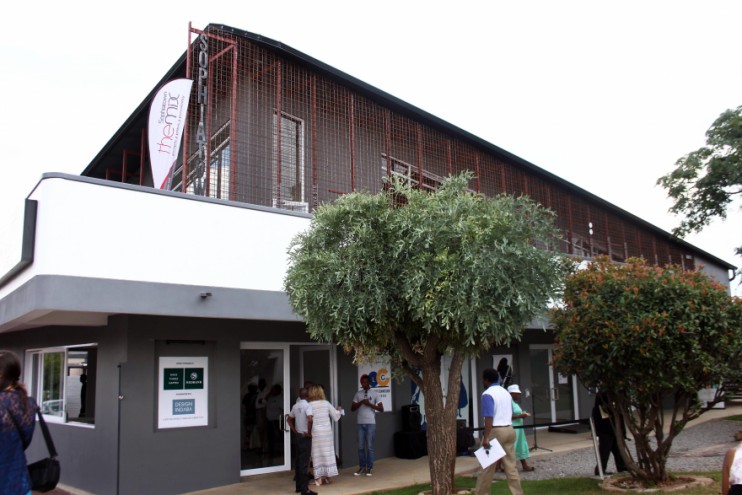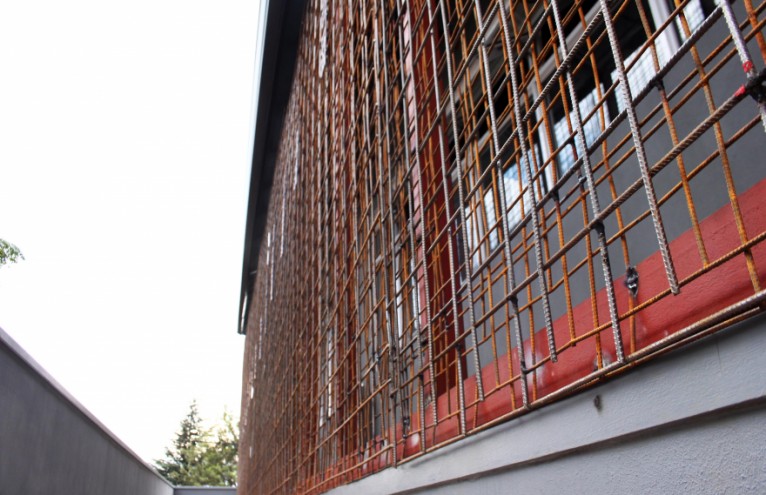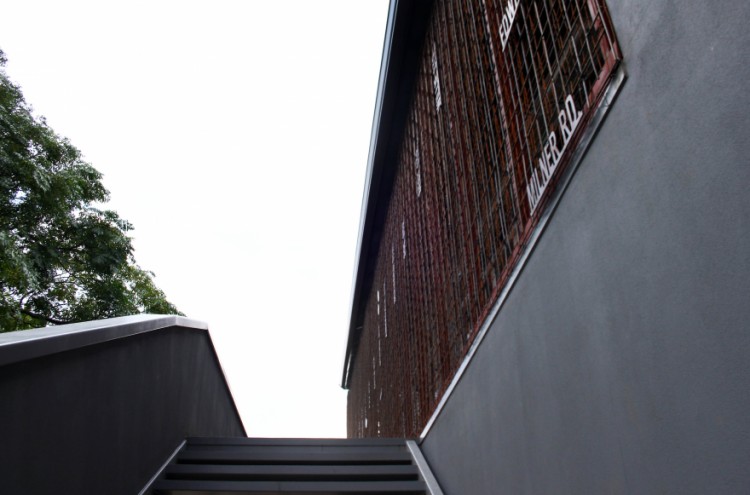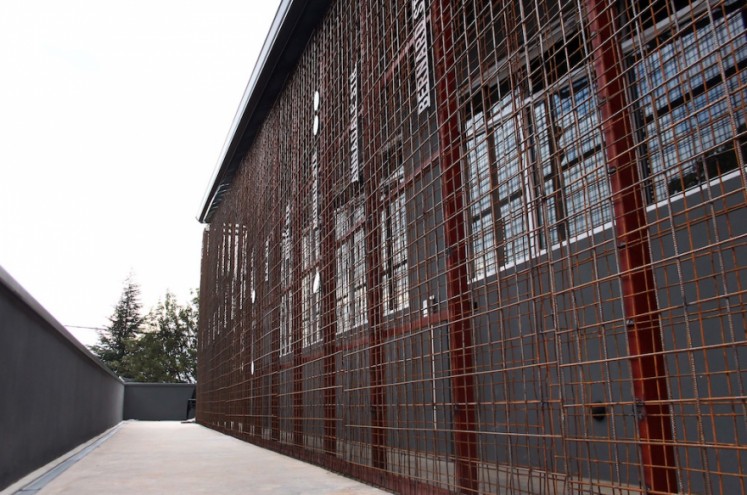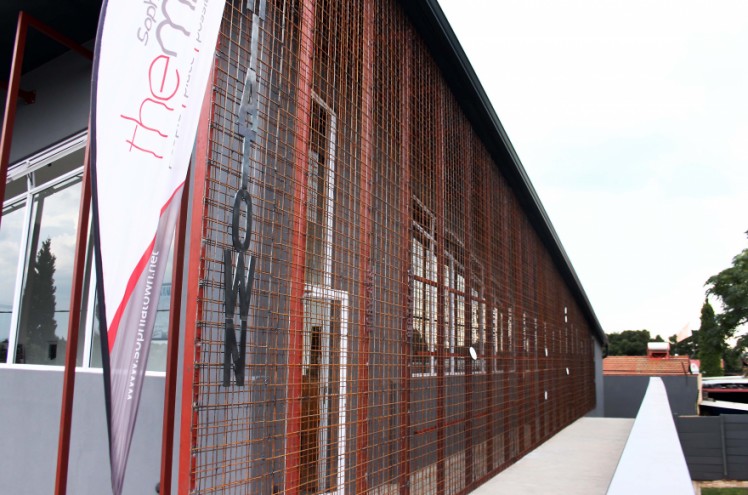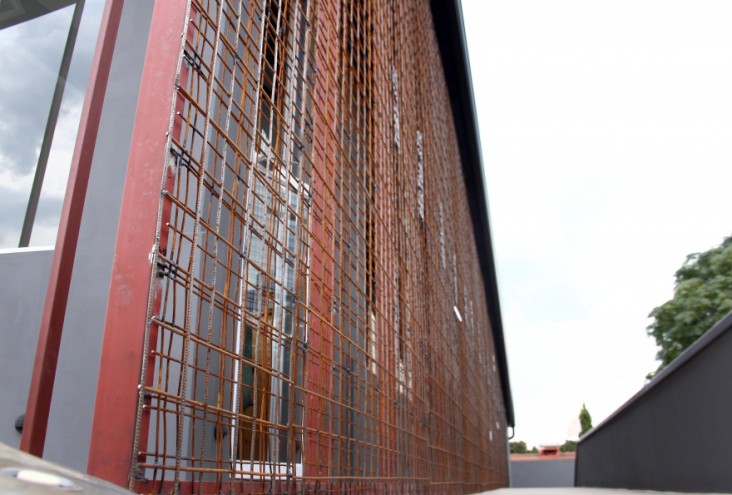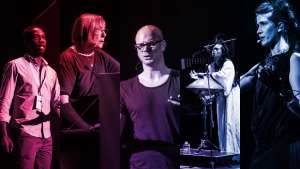From the Series
Thomas Chapman, the founder and principal of Local Studio, an architecture firm based in Johannesburg has unveiled The Sophiatown Remembrance Screen, a place for the former residents of Sophiatown to memorialise their former homes. Also known as Sof'town or Kofifi, Sophiatown is a historical neighbourhood in Johannesburg laden with memory and historical suffering.
In its heydey, Sophiatown was a vibrant, multi-cultural suburb filled with illustrious people. The epicentre of politics, jazz and blues in South Africa, it produced some of South Africa's most famous writers, musicians, politicians and artists. Annoyed at the multicultural nature of the place, the Apartheid government earmarked the neighbourhood for destruction under its forced removal programme.
After 65 000 residents were forcibly removed and relocated to matchbox houses in remote locations, the area was zoned whites-only and renamed Triomf, the Afrikaans word for “triumph”. The area was renamed to Sophiatown in 2006 and its heritage is slowly being restored. Funded and facilitated by Nedbank and Design Indaba, the remembrance screen is testimony to the fact that memory and architecture relate to one another in that they use empathy and imagery to remember the particulars of a place and the connection of a place to others.
The project was unveiled at the 2016 Design Indaba conference during Chapman's speaker talk. It sits proudly on the north and east facades of Local Studio's Trevor Huddleston Memorial Building: a multipurpose community centre in Sophiatown which caters to the broader Sophiatown and Westbury community.
We spoke to Chapman about the value of using architecture and urban planning to bridge historical divides:
Tell us about the Sophiatown Remembrance Screen that you've just revealed at the Trevor Huddleston Memorial Centre in Sophiatown?
The Sophiatown Remembrance Screen is a functional sunscreen for a community building that doubles as a map of Old Sophiatown, where forcibly removed residents can record the location of their former homes.
Why is Sophiatown important to you as an architect?
I grew up close to Sophiatown and have been fascinated by its history ever since I was quite young. I dedicated two Masters dissertations to the area, there is a fair amount of international interest in the history of Sophiatown so I was able to travel and lecture quite a bit over the years.
After starting Local Studio, I inevitably became involved in a lot of urban design and architectural work in the area, starting with the Trevor Huddleston Memorial Building, which is attached to the new sunscreen.
What is the relationship between individual and collective memory and architecture?
With specific reference to Sophiatown as a site of forced removals, there is so much nostalgia attached to places of gathering like communal yards, street corners and stoeps. These are tangible urban typologies that promote social interaction and thus become important sites of collective memory.
Individual memory is something else altogether that is perhaps best celebrated through oral history, and there is great potential in the relationships between oral history and architecture in South Africa.
How to you create memory through architecture that resists the temptations of fashion and temporality?
I believe that public and community architecture should speak strongly of its time and place, through construction materials and methodologies. The concept of timelessness should relate more to the functionality of the building and its ability to adapt to changing urban currents.
I always think of the Casa del Fascio in Como, Italy: the building was designed as the headquarters of the fascist party but adapted very well to many subsequent 'social orders' without any real physical alterations. The unchanging element here is a wonderful public square with a beautifully crafted public/ private threshold.
What guiding principles did you follow during the design phase?
We started with an intensive community participation process, meeting with many former and current residents of the area in trying to determine what this building should be and do. Following this, we quite literally adapted a few of the common urban typologies in old Sophiatown: the stoep, yard and corner shop. The building is rendered in a combination of light gauge and structural steel: these are construction systems that we are quite familiar with as a practice.
What are the urgencies of contemporary architecture?
Contemporary architecture in South Africa should really be addressing the dearth of good quality, well-managed and inclusive public space. This is the starting point for social transformation and applies to commercial office buildings as much as to community buildings like ours in Sophiatown. The biggest mistake we are making as a society is the belief that urban problems can be solved through the creation of massive gated communities like Steyn City and Waterfall City in Johannesburg. These are cancerous, counter-revolutionary violations to our landscape that are unfortunately quite irreversible.

